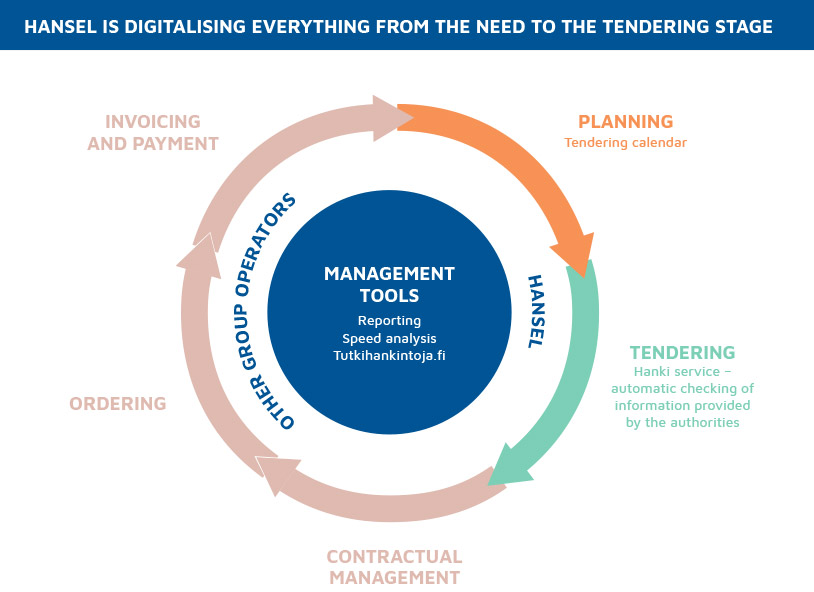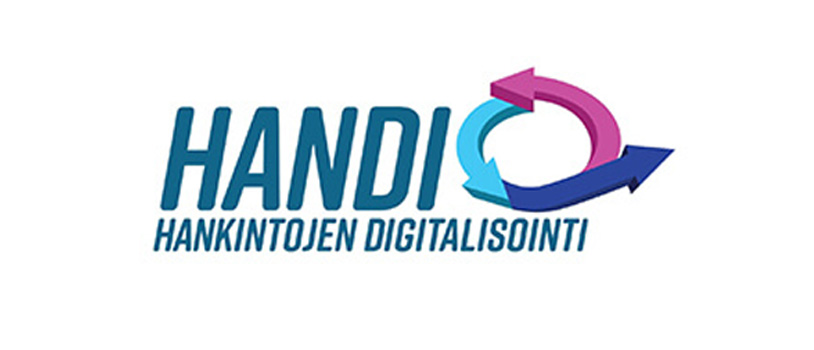Digitalisation improves procurement efficiency
Hansel wants to reform procurement, and one of its strategic objectives is to speed up digitalisation. This was promoted through the Ministry of Finance’s Handi programme. The procurement process is simplified and unified through new operating models. In 2017, Hansel’s activities included the development of the Handi programme for the digitalisation of procurement, automation of checks of information provided by authorities, creation of the procurement as a service model, and publication of information on government purchases in the Tutkihankintoja.fi service, which is discussed in further detail in the section on openness.
Guidance in electronic tendering processes
The Hanki service, enabling electronic procurement, was in use for the second year now. In January, it had 69 users; by the end of the year, the number of organisations using the service was 95. The number of calls for tenders submitted through the service was 300 and over 2,000, respectively. Implementation and development work continues actively. At the turn of the year, it was time to transfer the mini-tender material into the system and to build a dynamic procurement system in the Hanki service.
Workshops on electronic tendering processes were organised for the procurement units, and these were attended by more than 150 people interested in the use of the Hanki service. The workshops revolved around matters highlighted by customers that have need for tendering competitions, and the approach was deemed a good one. Hanki workshops and other information were also shared in video format. In addition, a Yammer group was established to provide support in the implementation of electronic procurement. Through the group, over 300 users have received information about and discussed the Hanki service.

Information from authorities automatically received in the tendering system
The checking of information provided by authorities during tendering processes was automated in 2017. The reformation significantly reduces the amount of work involved in public procurement worth about €30 billion. Finland was the first EU country to automate the checking of information provided by authorities.
Since information readily available in authorities’ records no longer needs to be attached to offers separately, automation has simplified tendering processes and made them run smoother from both customers’ and tenderers’ point of view. The checks include the payment of taxes and social security contributions, and at the end of the tendering process, the electronic system ensures the accuracy of the information provided by the supplier.
After the revision of the Act on Public Contracts in 2017, procurement units have been required to use the European Single Procurement Document in electronic tendering systems. In Finland, the same tendering system is used by municipalities and the government. Therefore, the automatic checking of information provided by authorities is now used nationally in all tendering processes related to public procurement that exceeds EU threshold values. Training related to the system, organised jointly by Hansel and KL-Kuntahankinnat Oy, was offered to over 200 people.
The project regarding the electronic checking of information from authorities received funding from the EU’s Connecting Europe Facility, and it is part of the government’s key project of digitalising public services.

Handi programme is streamlining processes
The programme renewing government procurement through digitalisation is well underway. It is the responsibility of the Ministry of Finance, and it will run until the end of 2019. By then, the entire procurement process will be standardised, from the planning to the payment of acquisitions. The digitalisation of procurement translates into changes in operating methods, in the form of a collaborative project and supported by information system solutions. Internal government processes become fewer, and are automated to a significant extent.
Learn about the objectives of and projects included in the Handi programme.
Read more >>



 Read next
Read next